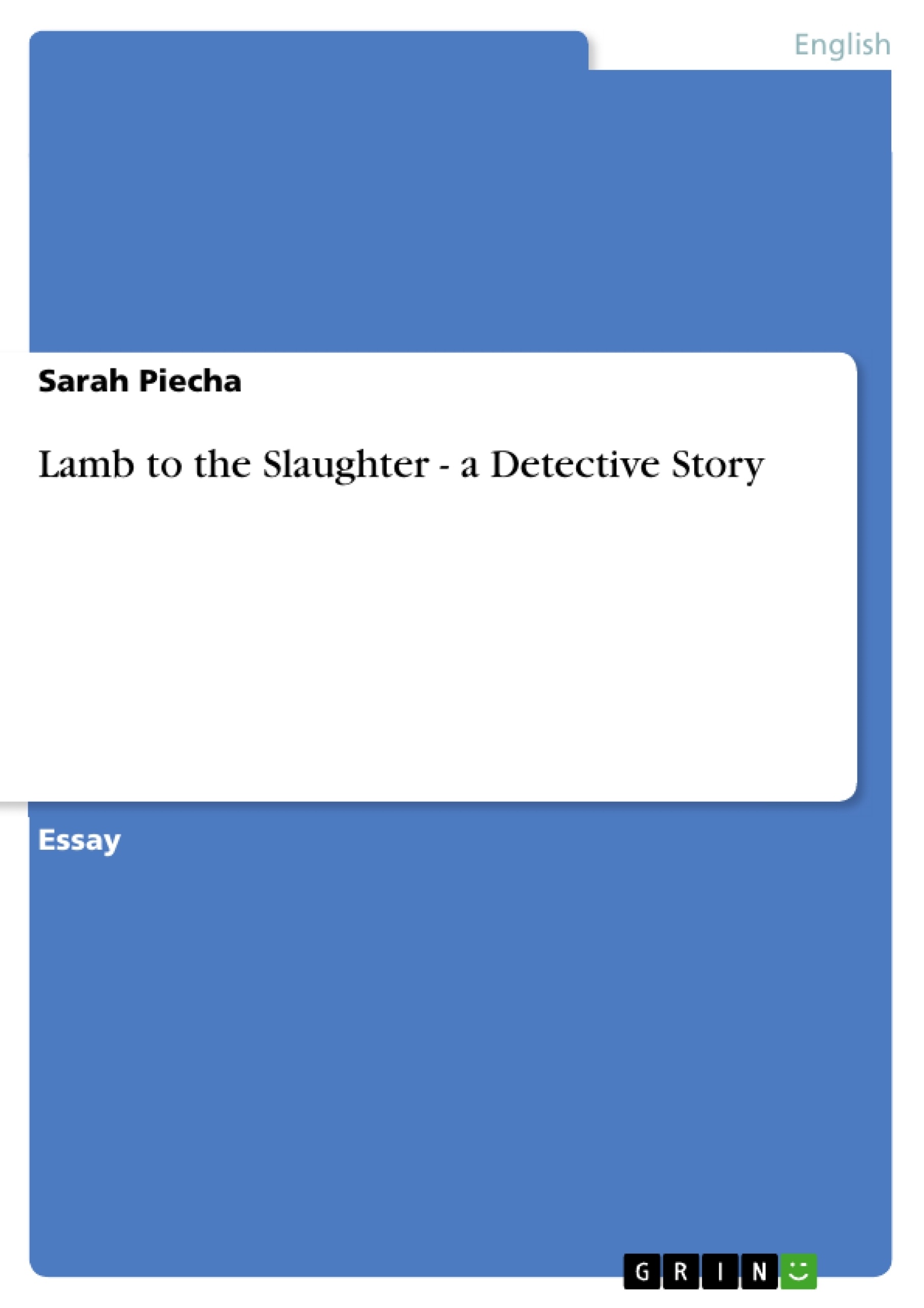Dahl touches the taboo theme of commiting a murder here which is not typical for a short story. It occurred to me that the story better fits into the genre of crime fiction. In the following I will discuss whether this is true or not, whether Roald Dahl’s Lamb to the slaughter carries the main features of that genre or not.
Table of Contents
- Introduction
- Lamb to the Slaughter as a Detective Story?
- The Investigation
- The Criminal
- The Victim
- The Investigator
- Lamb to the Slaughter as a Short Story?
Objectives and Key Themes
This analysis examines Roald Dahl's "Lamb to the Slaughter," exploring whether it aligns with the conventions of detective fiction or the characteristics of a typical short story. The analysis investigates key elements of each genre, comparing them to Dahl's narrative techniques and character development.
- The blurring of lines between detective fiction and short story genres.
- Character analysis of Mary Maloney, focusing on her dual personality and ambiguity.
- Examination of the narrative structure and pacing within the story.
- Analysis of the role of setting and atmosphere in shaping the narrative.
- Assessment of the effectiveness of Dahl's storytelling techniques.
Chapter Summaries
Introduction: This section provides background information on Roald Dahl, the author of "Lamb to the Slaughter," and briefly introduces the story's premise—the murder of a man by his wife. It sets the stage for the subsequent analysis by highlighting Dahl's career and the story's unusual subject matter. The introduction positions the central question: does "Lamb to the Slaughter" fit better within the genre of crime fiction or short stories.
Lamb to the Slaughter as a Detective Story?: This chapter meticulously analyzes "Lamb to the Slaughter" through the lens of detective fiction. It examines the presence of an investigation, puzzle elements, and the characteristics of the criminal, victim, and investigator. It discusses how the story subverts expectations of the detective genre, particularly in its portrayal of the investigation's outcome and the unusual ambiguity of each character. While some elements align with detective fiction, the analysis ultimately questions whether the story fully embodies its conventions.
Lamb to the Slaughter as a Short Story?: This chapter argues that "Lamb to the Slaughter" is more aptly categorized as a short story. It supports this by focusing on elements such as the concise timeframe of the narrative, the limited but significant cast of characters, and the carefully crafted setting and atmosphere that contribute to the story's overall impact. It examines how these elements help build suspense and allow for a concentrated exploration of theme. The analysis highlights the story's effectiveness as a short story, despite sharing some aspects with detective fiction.
Keywords
Roald Dahl, Lamb to the Slaughter, detective fiction, short story, crime, murder, character analysis, narrative structure, setting, atmosphere, suspense, ambiguity, irony.
Roald Dahl's "Lamb to the Slaughter": A Comprehensive Analysis - FAQ
What is the purpose of this analysis of "Lamb to the Slaughter"?
This analysis explores whether Roald Dahl's "Lamb to the Slaughter" fits better within the genre of detective fiction or short stories. It examines key elements of each genre, comparing them to Dahl's narrative techniques and character development.
What are the key themes explored in the analysis?
The analysis investigates the blurring of lines between detective fiction and short story genres; conducts a character analysis of Mary Maloney, focusing on her dual personality and ambiguity; examines the narrative structure and pacing; analyzes the role of setting and atmosphere; and assesses the effectiveness of Dahl's storytelling techniques.
What aspects of detective fiction are examined in relation to "Lamb to the Slaughter"?
The analysis examines the presence of an investigation, puzzle elements, and the characteristics of the criminal, victim, and investigator within the story. It explores how the story might subvert or align with the expectations of the detective genre, particularly regarding the investigation's outcome and character ambiguity.
How does the analysis consider "Lamb to the Slaughter" as a short story?
The analysis argues for "Lamb to the Slaughter" as a short story by focusing on its concise timeframe, limited yet significant characters, carefully crafted setting and atmosphere, and how these elements contribute to suspense and thematic exploration. It highlights the story's effectiveness within the short story genre despite some shared aspects with detective fiction.
What is included in the Table of Contents of the analysis?
The Table of Contents includes an Introduction, a chapter analyzing "Lamb to the Slaughter" as a detective story (including sections on the investigation, criminal, victim, and investigator), and a chapter analyzing it as a short story.
What are the chapter summaries provided in the analysis?
The summaries provide background on Roald Dahl and the story's premise. The "Lamb to the Slaughter as a Detective Story?" summary details the analysis of the story through the lens of detective fiction, highlighting its subversion of genre conventions. The "Lamb to the Slaughter as a Short Story?" summary focuses on the story's elements as a short story, emphasizing its concise narrative, characterization, and atmospheric effects.
What are the keywords associated with this analysis?
The keywords include Roald Dahl, Lamb to the Slaughter, detective fiction, short story, crime, murder, character analysis, narrative structure, setting, atmosphere, suspense, ambiguity, and irony.
- Quote paper
- Sarah Piecha (Author), 2005, Lamb to the Slaughter - a Detective Story, Munich, GRIN Verlag, https://www.grin.com/document/72869




